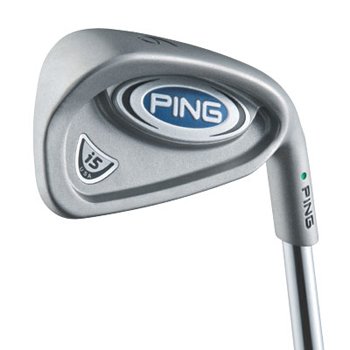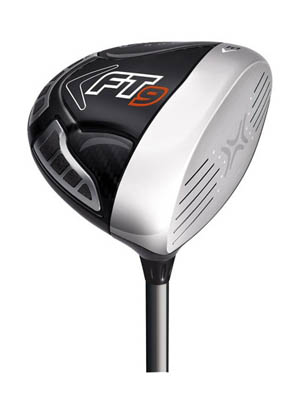Archive for May, 2011
Srixon AD 333 Golf Ball Reviews – New and Used
- May 28, 2011, 8:08 pm
- admin
- In Golf Balls
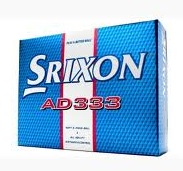 Srixon AD 333 Golf Ball Review
Srixon AD 333 Golf Ball Review
Srixon has slowly been climbing the golf ball rankings year after year with great quality golf balls that appeal to any handicap. A close friend of mine gave me some Srixon AD 333 golf balls to try out, so I decided to compare them with Titleist NXT golf balls to see how they perform.
The Srixon AD 333 golf ball is a 2-piece ball made with a state of the art Rabalon elastomer cover. It supposed has a softer feel and more durability than Surlyn, which is another popular cover used on golf balls. It has a 333 aerodynamic dimple pattern, which is unique in that most golf balls these days have an even numbered dimple pattern. With that said, how does it compare to the Titleist NXT?
Long Game
As far as the long game (driver, woods, high to mid irons), the Srixon AD 333 performed above average compared to the Titleist NXT. I was most surprised at the distance difference of the two golf balls. The Srixon golf ball went an average of 10 yards further than the Titleist golf ball did. A lot of it had to do with the launch angle and roll. The Srixon AD 333 certainly a high launch angle to say the least, and this lead to greater carry and roll with the driver. The woods and irons were mixed when it came to the Srixon golf ball. The distance control for the irons and woods was great, but the spin on the golf ball was below average when compared to the Titleist NXT. Where I could reasonably expect the Titleist golf ball to release a little and then stop on the green, I could hardly get the same result with the Srixon golf ball. It always seemed to just hit the green and keep on running off of it, as if it were being chased by something. This was surprising given that the launch angle was generally higher with the Srixon AD 333 as opposed to the Titleist NXT golf ball. I also found it difficult to hit low stinging shots into the wind with the Srixon golf ball. For a low handicapper like myself, it is a must to be able to adapt to the environment and hit particular shots when called for, and I was able to do this as well with the Srixon AD 333.
Short Game
As stated earlier, the golf ball does not have a lot of spin to it when approaching the green (at least during the few golf rounds that I played with it). However, it still compared favorably to the Titleist NXT when it came to the short game (putting, chipping, low irons). What surprised me the most concerning the short game using the Srixon AD 333 was bunker play. I was hitting great bunker shots consistently with the Srixon golf ball, as opposed to sporadically using the Titleist golf ball. I generally hit explosion-type bunker shots where the ball just lands on the green and runs to the flag, and the Srixon golf ball performed beautifully in this area. Nonetheless, it was below average when it came to chipping around the green though. If you need to hit a flop shot or have the golf ball stop immediately this is not the golf ball to do it effectively. Another bright spot however came when putting, as the Srixon golf ball had a better and much softer feel than the Titleist golf ball. It was much easier to gauge distances putting when using the Srixon AD 333.
Overall View
My overall view of the Srixon AD 333 is that it compares well to the Titleist NXT golf ball, for both long game and short game. The ball offers great distance off the tee, while having below average spin on incoming shots to the green. It is a mid-handicappers ball at best, as it doesn’t offer the performance that a low handicapper needs around the greens. It could be a great alternative consider if you are playing a Titleist NXT or similar golf ball.
Take a look at some great deals on new and used Srixon AD 333 Golf Balls.
Ping I5 Lob Wedge Review
- May 26, 2011, 3:03 pm
- admin
- In Ping Golf Clubs, Wedges
Ping I5 irons have been widely regarded as for their craftsmanship and playability. They are also one of a select few golf manufacturers that are well known for their wedges, whether they are 48, 52, 56, or 60 degrees. With this in mind I decided to try out the Ping I5 lob wedge to see if it really provides the playability that I am looking for in a wedge.
The specific lob wedge I tried out was the Ping I5 with a red dot. What does the red dot mean? After putting in some research, I found out that the dot color relates to the lie angle of the club itself. Before swinging a golf club one should make sure that the grooves of it are parallel to the ground, with both the heel and toe not being elevated above the other. The red dot on the club specifies that the lob wedge is -0.75 degrees flat. What this means is that the heel of the club is elevated a bit more than the toe, which leads to shots going more to the right for the average golfer. With all of that technical golf jargon aside, let us move on to the review itself.
As far as positives, the Ping I5 lob wedge has great feel and control not only around the greens but also in the fairway as well. It feels a bit lighter than a normal wedge, and I believe that is what makes it feel so good. What does feel have to do with anything? For low handicap golfers like myself, feel plays an important part in the wedge game (shots 100 yards and in). You want to have a club that you can feel confident in and know will get the ball where you want it to go, and I certainly felt very comfortable using this club. The trajectory on most shots was either mid or high ball flight. The golf ball goes airborne very easily when hitting this lob wedge. Even when in the deep rough it still has a pretty good trajectory to it. Lastly, the Ping I5 lob wedge has very good forgiveness. When I hit a shot that was a bit off the sweet spot the golf ball was still very close to my original target.
Now onto the negatives. Concerning spin, I thought the lob wedge was average to below average when it came both to fairway shots and shots around the green. Don’t get me wrong, it spins like any other lob wedge would when hit properly, but that is the problem. If the spin is the same as other lob wedges on the market, why not go with those instead? I like to hit a lot of bump and chips around the green, and this lob wedge did an okay job at best. At least two or three out of every ten shots did not check up the way that I had planned it to, and this can add unnecessary strokes to any golf round.
My overall conclusion of the Ping I5 lob wedge is that it is a good club for its intended target area – mid handicappers (around 15). The lob wedge doesn’t have the top of the line performance that a low handicapper needs when trying to shoot scratch or below, but if offers great workability for golfers with mid to high handicaps. Before purchasing a Ping lob wedge, make sure to check with a golf pro or golf store representative to figure out which color dot is right for you. It could make the difference between a slice and a hook, so it is important to check into this before buying any golf club.
Take a look at some great prices on new and used Ping I5 Lob Wedges.
Callaway FT-9 Driver Fujikura ZCom for $99
- May 24, 2011, 2:02 pm
- admin
- In Callaway Golf Clubs, Golf Deals
Here is a great deal on a Callaway FT-9 Driver setup with the Fujikura ZCom graphite shaft for just $99.
The Callaway Golf FT-9 Driver expands on the success of the FT-5 Driver. Ball speed across the club face has been improved with to the addition of Hyperbolic Face Technology. The FT-9 Driver has the option of Draw or Neutral setups to allow golfers to choose the desired trajectory and ball flight they are looking for. Fusion Technology combines a carbon composite body with a titanium face cup creating maximum perimeter weighting and maximum forgiveness.
Check out some more deals on new and used Callaway FT-9 Drivers.
Callaway LR 550 Rangefinder for $299
- May 23, 2011, 3:03 pm
- admin
- In Accessories, Golf Deals
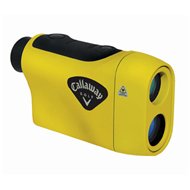 The PGA Tour Superstore has a great deal on the Callaway LR 550 Rangefinder at just $299. The Callaway LR 550 Rangefinder provides fast and accurate distances up to 550 yards and is a great accessory for any golfer.
The PGA Tour Superstore has a great deal on the Callaway LR 550 Rangefinder at just $299. The Callaway LR 550 Rangefinder provides fast and accurate distances up to 550 yards and is a great accessory for any golfer.
The Callaway LR 550 features:
Continuous mode ranges multiple targets in succession for up to eight seconds.
High-eyepoint design.
Waterproof.
Compact, lightweight design.
6x magnification.
Case included.
Technology by Nikon.
Take a look at some more deals on new and used golf rangefinders.
Callaway Warbird Plus Golf Ball Review
- May 20, 2011, 12:12 am
- admin
- In Golf Balls
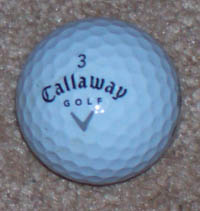 Callaway Warbird Plus Golf Ball Review
Callaway Warbird Plus Golf Ball Review
I don’t usually play Callaway Golf Balls, as the brand is more known for its golf clubs than its golf balls. However, there was a great deal on a dozen of the Callaway Warbird Plus golf balls at a local golf store so I decided to give them a try and see how they performed out on the golf course.
The first thing that came to mind when purchasing these was why they were called Warbird Plus. Apparently, it is because they made improvements to the original Warbird golf ball. Callaway made two main changes to the golf ball. The first is that they brought the dimples of the golf ball more in line with their HEX aerodynamics (in other words, instead of having dimples in a simple circle, Callaway made it so that they are hexagons instead). Another improvement Callaway made to the Warbird Plus was in regards to its core. They changed out the old core and put in a new “high powered” core that supposedly provides long lasting durability, maximum distance, and softer feel. In other words, they made the ball like any other golf ball you would find on the market today, except for those weird hexagon dimples.
Long Game
The Warbird Plus certainly performed well when it comes to the driver and irons. It gets good distance, especially for its price, as well as a decent amount of spin off of the clubface. It may help those who are struggling with either a slice or a hook off the tee, as I found when I intentionally tried to hit both that it didn’t go as far left or right as it would other golf balls. I normally hit a fade with the driver, and it didn’t do it as much when hitting this golf ball for whatever reason (may be the new dimples, but I’m not completely sure). The irons performed okay, about what I would expect from this kind of golf ball. It hardly gives any spin at all for the mid to high irons, as I saw shot after shot keep rolling on the green and not check up. I got some spin on the low irons though, so it wasn’t all that bad.
Short Game
Like any typical golf ball in this price range (~$25), it has below average spin around the green. As a three handicap golfer I like to play a lot of bump and run chips around the green, and this ball certainly ran. However, it hardly checked up at all, and especially when hitting bunker shots the ball just kept rolling and rolling. If you can learn to consistently play the golf ball shorter of the hole than you normally would, I have no doubt that this ball will work well around the green. I was surprised however when putting with the Warbird Plus. It felt as good as hitting a more expensive golf ball and had a good feel to it.
Overall Impression
My overall impression of the Callaway Warbird Plus golf ball is that it is a good golf ball for its price. Definitely consider getting it if you are a mid handicapper (10-15 range). It will get good distance off the tee as well as good fell when putting. If you are a low handicapper like me you may want to look elsewhere, as the golf ball does not complement the short game in any way. As I stated earlier, expect the Warbird Plus to be worth its price but not much more than that.
Take a look at some great deals on new and used Callaway Warbird Golf Balls.
Srixon Z-Star Golf Ball Review
- May 20, 2011, 12:12 am
- admin
- In Golf Balls
 Srixon Z-Star Golf Ball Review
Srixon Z-Star Golf Ball Review
Titleist has dominated the premium golf ball market for years with its Pro V1 and Pro V1X. However, competitors such as Taylormade, Bridgestone, and Srixon are certainly closing the gap on the iconic brand. With PGA professionals such as Vijay Singh and Jim Furyk hyping the Srixon Z Star for some time now, I thought I would give the golf ball a shot to see how it compares with the Pro V1.
Like the Titleist Pro V1, the Srixon Z-Star is a three piece golf ball designed for great spin and control around the greens while not losing any distance off the tee. The core of the golf ball is one of the firmest you will find anywhere (if you want to know the technical jargon, it is called the energetic gradient growth core), while the outside of it has a thin urethane cover that helps with both feel and distance.
Long Game
As far as the long game (driver, irons) I thought the golf ball performed on par with the Pro V1. For the driver, the distance was about the same as the Pro V1, maybe a couple yards short at times but not much of a real difference to tell. The spin off of the clubface was great and actually performed a little better than the Pro V1 did. I also found the Z-Star to be more durable than the Pro V1 after hitting numerous driver shots with both balls. Regarding the irons, the Z-Star was just as good as the Pro V1 when it came to both spin and trajectory. You know you are hitting a top quality golf ball when you can get some spin off of mid to high iron shots, and I certainly had many with the Z-Star. One minor difference that I found with the Z-Star is that it had somewhat higher trajectory than the Pro V1. This can be a good or bad thing depending on your swing and where you are, but I thought it was helpful for my three handicap swing.
Short Game
The short game really determines whether a premium golf ball like the Z-Star is worth the money, and it disappointed me on and around the green unfortunately. The problem with the Z-star that I found was in its stopping action. It just did not stop like the Pro V1 did, especially when it came to bunker shots. On normal chips around the green it performs okay, but if you are a bump and run kind of chipper like me it doesn’t check up as much as the Pro V1 did when I was testing it out on the golf course. When putting the Z-Star has somewhat of a more firm feel to it as opposed to the Pro V1. I am more of a firm kind of player anyways so I was able to drain more putts with it than the Pro V1, but if you are looking for a softer feel on the greens then do not go with the Z-Star.
Overall Impression
My overall impression of the Srixon Z-Star is that while it may be a little bit better for the long game, it is not as good as the Pro V1 when it comes to the short game. If the short game is one of your strong suits and are looking for a (somewhat) cheaper alternative to the Pro V1, consider trying out the Srixon Z-Star. If it isn’t, stick with the Pro V1 or consider trying the Bridgestone B330.
Check out some great deals on new and used Srixon Z-Star Golf Balls.
TaylorMade Penta TP Golf Ball 36-Pack Deal
- May 17, 2011, 3:03 pm
- admin
- In Golf Deals
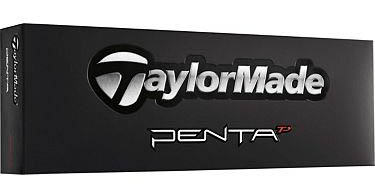 Golfsmith.com has a great deal on TaylorMade Penta TP Golf Ball 12-Pack for $39.99. Even better, buy three packs and the price falls to $79.98. With $1 shipping via coupon code “BBAC710”, that comes to just $26.99 per pack and the lowest total price we have seen when purchased separately by $39.
Golfsmith.com has a great deal on TaylorMade Penta TP Golf Ball 12-Pack for $39.99. Even better, buy three packs and the price falls to $79.98. With $1 shipping via coupon code “BBAC710”, that comes to just $26.99 per pack and the lowest total price we have seen when purchased separately by $39.
The TaylorMade Penta TP Golf Ball is the first 5-layer tour ball and designed to provide optimal performance on every shot. It has the benefits of the TP Black and the TP Red in one ball.
Take a look at some more deals on more New and Used TaylorMade Penta TP Golf Balls.

